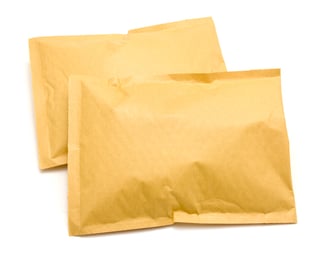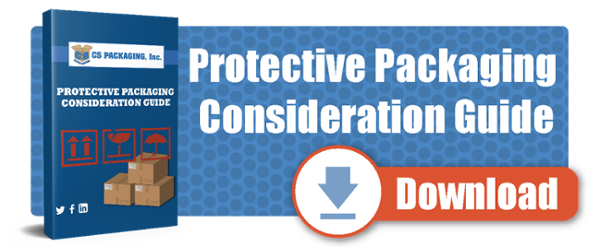
Packaging a product for shipping is a regular part of the sales process.
However, we rarely stop to consider how paper production began or the background of shipping paper that is commonly used.
Kraft shipping paper is a key product in protecting items shipped around the world - and it has seen quite the evolution in its more than a century of use.
What is Kraft Paper Used for?
The uses of Kraft paper are endless, and its versatility makes it a favorite among businesses of all kinds.
Kraft paper is often used for:
- Lightweight wrapping to package items of all shapes and sizes, such as food products, electronics, and retail goods.
- Shock absorption packaging, a packaging material for fragile items that need extra protection during shipping or transport.
- Customized packaging as it can be printed with branding graphics and logos.
- Can be manipulated into pads and other shapes to offer cushioning and blocking-and-bracing within boxes and crates
- Sometimes used in combination with other materials to construct durable mailers for sending merchandise safely through postal services. There are mailing envelopes made 100% from paper, as well as paper outside envelopes with bubble, cotton, and other protective fillers inside.
The Kraft process is an important part of the papermaking industry, and it continues to be used today to produce a variety of products. These products range from food packaging to bookbinding, making kraft paper sheets one of the most widely used materials in the world.
Kraft Paper | How It Started
The Kraft process, also known as the sulfate process, was a major breakthrough in papermaking. Developed by Carl F. Dahl in 1879, this revolutionary method of paper production allowed for the creation of stronger and more durable paper than ever before. The key differentiator is the use of sodium sulfate and white liquor to dissolve the lignin in wood chips, allowing for easier separation of the cellulose fibers.
The first Kraft paper-making company opened its doors in Sweden in 1890. The process became more environmentally friendly in 1930 with the introduction of the recovery boiler. These boilers were the first recovery equipment type to allow all processes to occur in a single vessel. They also improved smelt removal, allowing it to be removed directly from the furnace through smelt spouts and diverted into a dissolving tank.
Kraft paper quickly began to be used for a variety of purposes, from product protection during shipping to bookbinding. Over time, Kraft paper has become a staple in many industries, from food and beverage packaging to retail displays. Today, Kraft shipping paper is everywhere, and it's almost impossible to find a product that doesn't come wrapped in some sort of Kraft paper! From grocery store items to brown Kraft paper envelopes to medical supplies, the uses of this ever-versatile material are endless.
There are several types of Kraft paper used in shipping, including:
- Virgin - a type of paper produced using the Kraft process without the use of recycled materials. This paper is widely used in food and beverage packaging. It’s also used for shock absorption packaging due to its great strength and durability. Virgin Kraft paper is an excellent option for businesses looking for a custom solution that’s both strong and environmentally friendly.

- Recycled - Kraft paper can be recycled up to seven times. Kraft paper is collected and put through a process that involves: pulping, cleaning, screening, deinking, dispersion, kneading, bleaching, water treatment, and waste handling. The new paper is produced as a result of the process, which requires significantly less energy to produce. This makes it a much more environmentally friendly option. During the recycling process, fewer chemicals are used compared to virgin pulp production and the resulting paper is just as strong and durable. This means businesses can confidently use Recycled Kraft paper for their packaging needs while still reducing their carbon footprint.
- Colored - Kraft paper that has been dyed. This specialized paper offers exceptional strength and durability, making it a great choice for packaging applications where strength and visual appeal are both important. Colored Kraft paper is also often used for bookbinding, as the added color helps to create a unique and eye-catching design.
- Bleached - Kraft paper with an added bleaching step to create a white color. It is also often used for bookbinding, as its white color provides a more professional look.
- VCI - VCI paper or “vapor corrosion inhibitor” paper is used to protect both ferrous and non-ferrous metals from environmental corrosion. When a metal part is wrapped in this paper, the special ions form a shield that displaces moisture and repels rust away from the surface of the product
- Poly Coated - Some papers use a poly coating to repel moisture and other contaminants. This packaging paper offers the 2-in-1 protective benefits of both paper wrap and a poly bag.
Kraft Shipping Paper Has Evolved to Meet Today’s Demand
 From its invention over 140 years ago to the present day, this revolutionary process has had a major impact on the papermaking industry and continues to be used in a variety of applications.
From its invention over 140 years ago to the present day, this revolutionary process has had a major impact on the papermaking industry and continues to be used in a variety of applications.
By remembering this remarkable material's past, present, and future, there’s no doubt that Kraft paper will continue to serve as an essential part of the papermaking industry for years to come.
How Can Kraft Paper Protect Your Products?
While Kraft paper is versatile and can be a strong addition to your protective packaging inventory, it’s not the only option out there for protecting products during shipping. For information on a variety of options available, read through our protective packaging guide:
.png?width=845&height=137&name=Slice%203%20(23).png)
